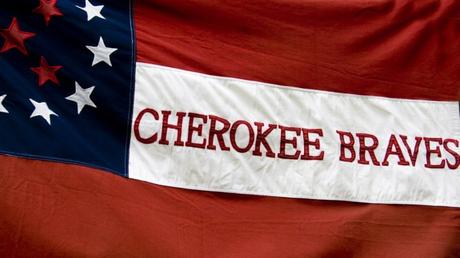
The American Civil War was not just a conflict between the citizens of the Union and the Confederacy. Stretching across Indian territory on the western frontier of the war, it has deeply divided nations, communities and tribal families. About 20,000 Indian soldiers participated in the conflict, fighting for both sides.
At the start of the war, many countries in Indian territory signed treaties with the Confederacy, supported by a minority of rich Indians enslaved within their communities. But these sympathies were not monolithic: many Indians leaned towards abolitionism and argued for the sovereign independence of the United States and its bloody conflict. As the war progressed, the momentum changed when three Indian Home Guard regiments emerged to support the Union and protect vulnerable tribal communities from violent guerrilla warfare. The result: Indians fighting Indians in a war of white men.
While Native American soldiers would fight for a variety of reasons - to support or combat slavery, to defend tribal sovereignty, and to protect family and community - the war did little to advance their needs and their interests. Instead, it escalated long-standing internal tribal tensions and ravaged the territory the U.S. government had transferred them to decades earlier, creating a new wave of impoverished refugees.
READ MORE: How Native Americans struggled to survive on the trail of tearsAn old quarrel " breaks out in all its fury "
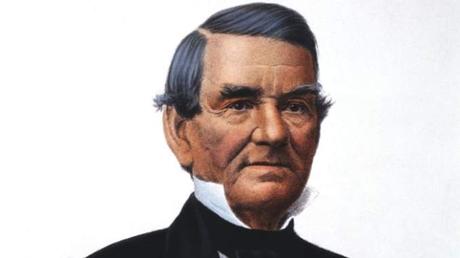
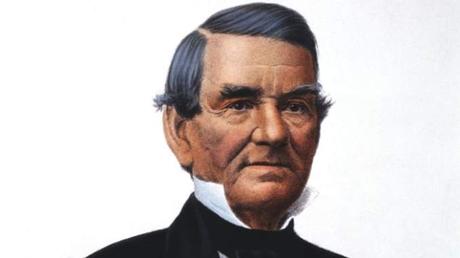
Universal History Archive / Getty Images
When Civil War broke out in 1861, Indian Territory encompassed most of the area now occupied by the state of Oklahoma. Ancestral home of tribal nations such as Osage, Quapaw, Seneca, and Shawnee, it had also become the commissioned home of the Cherokee, Creek, Choctaw, Chickasaw, and Seminole nations (known as the Five Civilized Tribes). Between 1830 and 1850, these groups were forcibly removed from their ancestral lands in the southeast and marched hundreds of miles west by the US government. The relocation, later known as the Trail of Tears, killed thousands of people.
The Cherokee Nation, politically divided since this convulsive period, exemplified just how war-torn tribal nations have been. On one side stood Senior Chief John Ross, the Chief who had traveled the land through the Trail of Tears. Supported by nearly a two-thirds majority, he called for neutrality and national unity as secessionist influence grew in and around Indian territory. Its supporters, organized as the Keetoowah Society, supported abolitionism but were motivated by national sovereignty and the desire for a self-determined Cherokee identity.
On the other side: a minority of wealthy Cherokees holding slaves who deeply resented Ross and his failure to align with the Confederacy. Their leader was Stand Watie, longtime leader of the Treaty Party, so called because its members, in defiance of the majority, illegally signed the treaty which forced the Cherokees out of their home country.
"There had been a smoldering hatred between two political factions since before the Cherokee movement of the former Cherokee nation," said the Annie Hendrix tribe, interviewed in 1938 as part of a series of oral history pioneers of the Indian territory. "And when the civil war broke out, it only allowed the fire of this old quarrel to erupt in all its fury.
READ MORE: Who Was Stand Watie?Three different factions take up arms
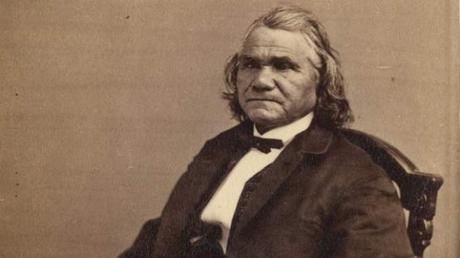
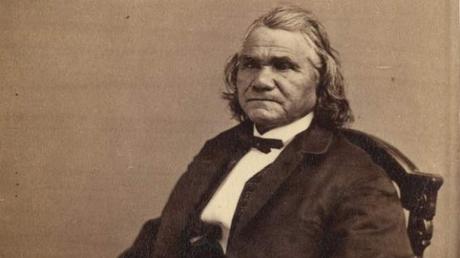
National Archives
In October 1861 Ross bowed to growing pressure and signed a treaty with the Confederate States of America, which promised the Cherokee nation protection, food, and other resources in return for several regiments of soldiers and access to their territory for the construction of roads and forts. Unpopular with most Cherokees, the treaty allowed Ross to maintain government stability and stay in power.
Several months earlier, Watie had worked surreptitiously with the Confederacy to form a regiment, the Cherokee Mounted Rifles, with several hundred supporters. (He became a brilliant campaign commander and a daring guerrilla leader.) After the treaty, a second regiment of Cherokee Mounted Rifles was formed under the command of Ross's loyalist Col. John Drew - a counterweight to power and influence. Watie croissants.
Meanwhile, a third political force began to mobilize: the "Loyal" Indians, led by Creek Chief Opothleyoholo, a staunch defender of Indian neutrality in the White War. Refusing to ally with the Confederates, he drove thousands of worshipers from several tribes, as well as escaped slaves and freedmen, into exile in Union-controlled Kansas, where the US government had promised a refuge. Along the way, in the fall and winter of 1861, the group endured harsh conditions and defended repeated attacks from Confederate forces, including Watie's mounted Cherokee rifles. But many Cherokees in Drew's Regiment, sympathizers of the Loyal Indians, deserted Confederation to join his camp - evidence of the growing divide between pro-Confederate and pro-Union Indians.
READ MORE: When Native Americans were massacred in the name of 'civilization'Union-backed Home Guard invades from the north and seizes Ross
In the spring of 1862, James G. Blunt, brigadier general of the Kansas Union forces, wanted to raise an Indian expeditionary force to infiltrate Confederate Indian territory. Intel had encouraged his belief that the main Cherokee leader Ross was not only sympathetic to the North, but could be persuaded to abandon his Confederate alliance.
So Blunt ordered the gathering of a 1 st Kansas Indian National Guard regiment comprising refugees and survivors of the Opothleyoholo camp of loyal Indians. The regiment consisted of nearly 1,800 men, mostly Creeks and Seminoles. Later, a second regiment was formed of nearly 1,500 men, mainly Creeks, Cherokees, Choctaws, Chickasaws and Osages.
The 1st Home Guard Expedition quickly crossed Indian Territory towards Tahlequah, the capital of the Cherokee Nation, and Park Hill, Ross's home. After repelling Watie's regiment at Cowskin Prairie, routing a larger Confederate force in the Battle of Locust Grove, and capturing Fort Gibson, they succeeded in claiming the interior of the Cherokee Nation.
News of the Union's resounding victory quickly spread, attracting nearly 1,500 new recruits across the Kansas Indian National Guard, including more than 600 deserters from Drew's Cherokee Mounted Rifles. The influx prompted the mounting of a new, Third Kansas Regiment, the core of which came from deserters from Drew's Confederate Regiment, effectively sidelining it as a fighting force.
Ross tried to remain steadfast in his treaty alliance. But after Blunt sent a force of 1,500 men to escort him to Fort Leavenworth, the leader and general quickly forged their own deal: Ross would immediately travel to Washington to meet with President Abraham Lincoln to discuss a renewed alliance. with the United States.
READ MORE: Broken treaties with Native American tribes: timelineConfederate guerrillas ravage Cherokee communities

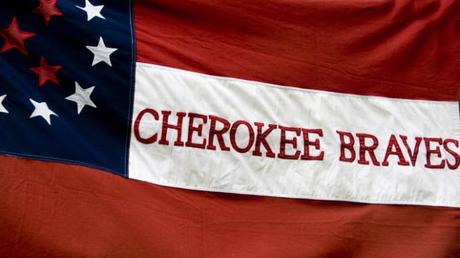
William Sherman / Getty Images
After the Home Guard withdrew, Watie's regiment of nearly 700 began retaliation which ravaged Cherokee society. War in and around Indian Territory raged throughout the fall and winter of 1862, with the redeployment of Indian Home Guard regiments to Kansas and Missouri, and then returning to Indian Territory to serve of crucial combat strength in at least four separate battles. The Battle of Newtonia saw Indian units on both sides of the conflict.
In 1863, delegates from the Cherokee National Council pleaded for another Union military offensive to quell the continued terrorism inflicted by Watie and his Confederate force. But while General Blunt's command has made several incursions into Indian territory this spring and summer, it has failed to ensure lasting stability.
According to Justin Harlin, the federal agent for the Cherokee, military authorities had assured him and the Cherokee people that they would protect the Indians in their homes, prompting him to procure and distribute agricultural supplies. But, he wrote: "About the 21 st of the month of May, the rebel Indians under the command of Stand Watie, entered the territory and stole from the women and children everything they could find ... The thefts, sometimes murdered and set on fire, continued until July 4th approximately without reduction.
Union forces dealt a decisive blow to the rebels in Indian Territory in July 1863 during the Battle of Honey Springs, where they decimated a unified Confederate presence. The defeat forced many sympathetic southern families to move to Texas during the war, including Watie's wife and children. But after another withdrawal from the Union left the countryside unprotected, Watie's group again returned to looting and pillage, along with the white settlers who crossed into Indian territory from Arkansas. Many families were forced to flee to Fort Gibson for protection. By year's end, Harlin reported, more than 6,000 refugees were camping within a mile of the fort.
Until the end of the war, the Cherokees and other Indians suffered tremendous suffering from failures of American support, disease, and continued guerrilla warfare. By the time the Union won the war and the Indian Home Guard dissolved in May 1865, the Cherokee Nation was barren and devastated, the resilience of its people being tested endlessly.
MORE: How the stunning photos portraying Native American life carry a mixed heritageFinally reconciliation
General Stand Watie, the persistent enemy of the Ross Party and the Union Indian Home Guard, was the last Confederate general to surrender on June 23, 1865. And Principal Leader John Ross died on August 1, 1866, in Washington, DC , still negotiating a Cherokee Nation treaty with the United States.
Reconciliation finally emerged. "The legacy of the Civil War actually comes a few years after the Civil War," says Dr. Julia Coates, Cherokee Nation Tribal Councilor and Assistant Professor of Native Studies at Pasadena City College. In 1867, the Keetoowahs put forward their own candidate, Lewis Downing, who had been in the Indian Home Guard, after first being in Drew's regiment. He ran against the established Ross Party candidate, William P. Ross, nephew of John Ross.
"He's doing a really remarkable thing and reaching out to Watie and the Southern Cherokees," Coates says. "They say, 'If you join us in supporting Downing, we'll start to pull you back into the Cherokee government, into the Cherokee company. Let's close this thing, after the extraordinary devastation and division of the Civil War. And it works, it leads to an era of Cherokee reconstruction.
